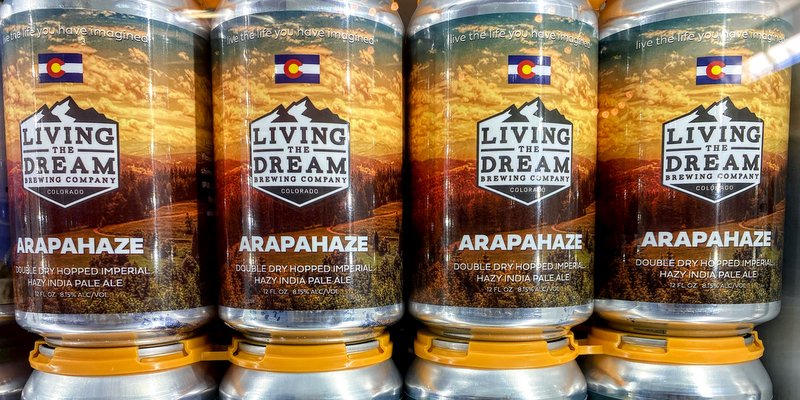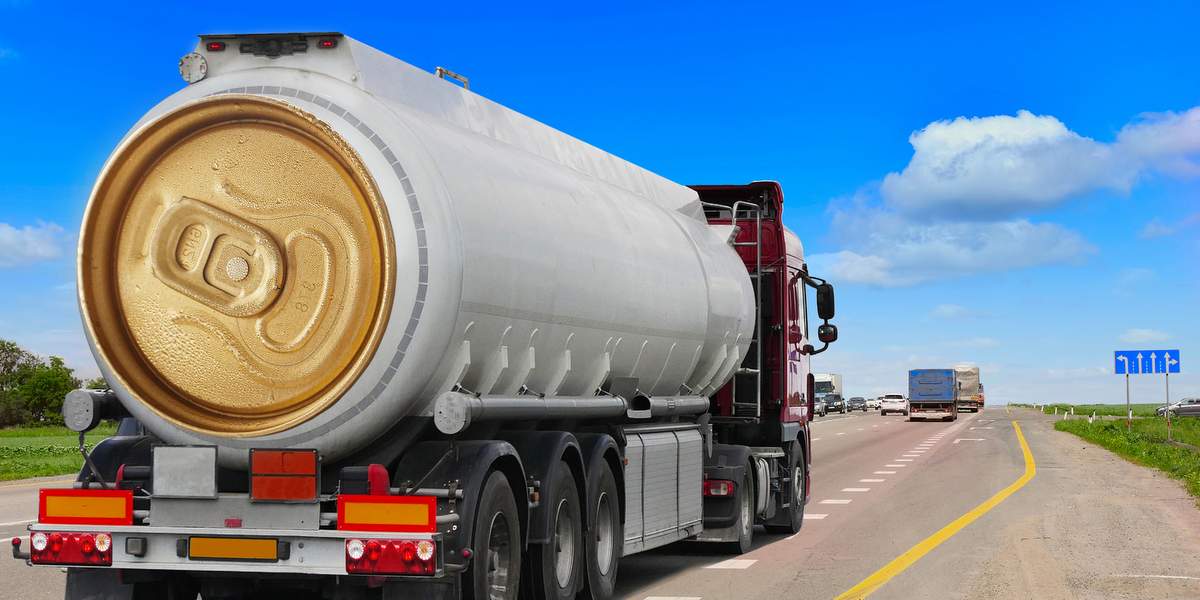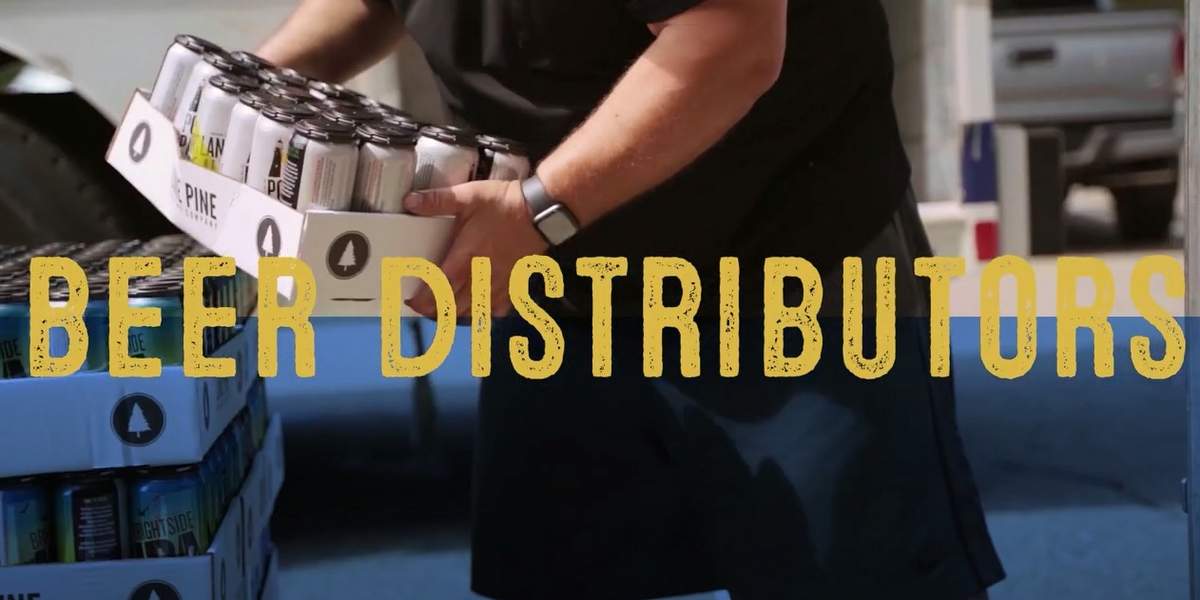
Living The Dream Brewing recently shifted its Arapahaze Double Hazy IPA 16-oz. 4-packs to 12 oz. 6-packs, which you can now find in various fridges across Colorado. Thought this was interesting considering we’ve seen some other breweries, like Hi-Wire, go in the opposite direction. We were curious why they made the switch — was it a supply issue? A sales initiative?
“We’re making this change to ensure supply of this beer within the current supply chain, not to mention we’re happy to give people a proper 6-pack of this crowd favorite,” says Living The Dream Founder Jason Bell.
Dominant aluminum can supplier Ball Corp. made big waves last year announcing that its order minimums would be increased. Their purchase levels somewhat drove the change:
“Our primary can supplier has been Ball Corp., and while they did discuss increasing the minimum purchase of printed cans to 1 million cans, we use blank cans and apply the label ourselves,” Bell tells us. “That minimum has stayed at 202,000 cans, which is good, but they are still not accepting any orders at our purchase level. So, [this move] is more about availability, but also we can give more beer at a better price per ounce to our customers.”
But as luck would have it, an intriguing new option just emerged in Colorado, called ZombieCan, via Canimal. They acquire like-new, unused pre-consumer cans for upcycling from can manufacturers and beverage companies and give them new life by applying a coating that covers all of the original graphics. In most cases these ‘orphan’ cans result from canmaker overruns, cancelled can orders or excess from discontinued beverages.
“All are from domestic canmakers and we strictly control the quality of the orphan cans we purchase,” says Lindsay Brandt of Canimal. “Once we have the orphan cans, we start the patent-pending process to ‘Zombify’ them, where we apply a food-safe, water-based metallic varnish, forming a permanent opaque coating with better adhesion than the original ink. We supply ZombieCans as ‘brite’ cans for use with adhesive labels, sleeving or can digitally print them to order. Our processes and procedures have been independently validated to ensure that ZombieCans perform as well or better than traditional brite cans in every respect.”
The ZombieCans production line just started up with an initial capacity of about a truckload per month, currently producing mostly standard 12 oz. cans but also offer 16 oz. and 12 oz. sleek cans.
“We are about to receive our first shipment from them, but the testing has all been very positive,” Bell says.
Brandt reports they are scaling production and in time will produce millions of cans per month per facility.
“We can supply digitally printed cans in any quantity from a case on up,” she tells us. “Minimum order for ZombieCans is one pallet. Lead times are not currently an issue and we are actively expanding production to meet expected strong demand without excessive lead times. We can ship just about anywhere, or customers are welcome to pick up cans from our Longmont, CO location.”
Does Bell see this as a permanent switch or just something makes sense given supply right now?
“We have a wait and see mentality,” Bell says. “There is also the option of going to 12-ounce 4-packs if we get the feedback from our retail partners and our customers as to what they prefer. At the end of the day, we will always let the market and our end customers affect the decision making process.”
What other changes had to be made?
The Double Hazy IPA recipe remains the same, of course. Arapahaze is brewed with large amounts of flaked and malted wheat and oats, mixed with lactose to temper big citrus and tropical fruit flavors that come from Citra, El Dorado, Idaho 7, Mosaic and Azacca hops, fermented with a New England IPA specific yeast strain.
The price point had to change, but the customer is of course getting more beer.
The canning line? “Our canning line can change over in about an hour, but even now, we run about 90% 12 oz cans, so this will just add to the efficiency.”
Distribution? “Both packages have a 2-can width footprint for the shelves in the beer coolers. The biggest thing we had to communicate is that a case will move to four 6-packs instead of six 4-packs. This creates a change in their margins, and we had to adjust pricing to accommodate that as well.”






Leave a Reply
You must be logged in to post a comment.